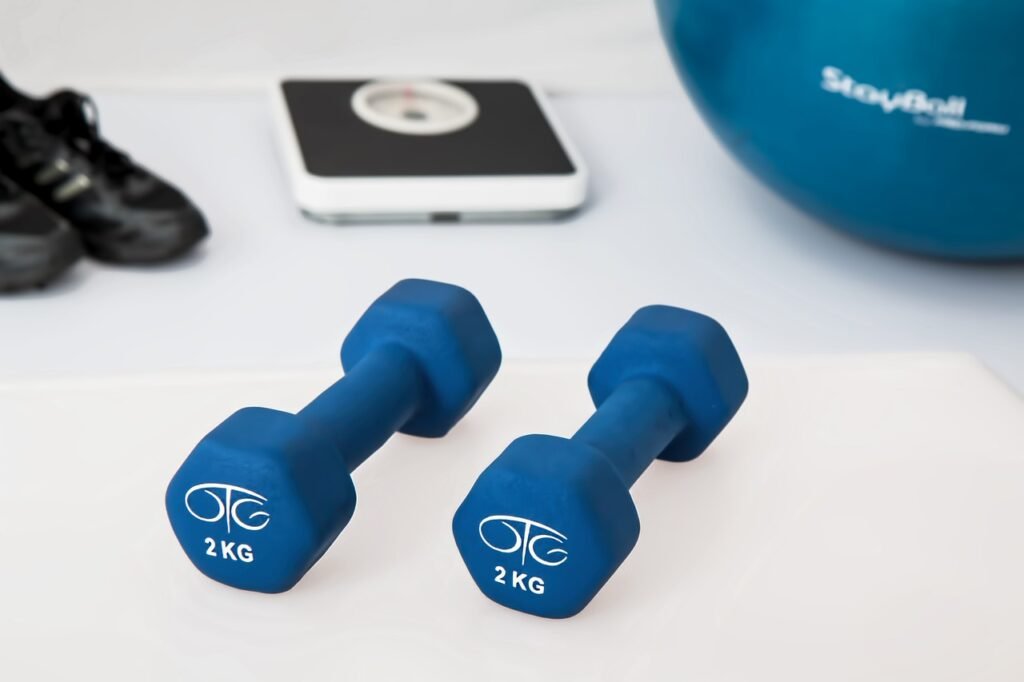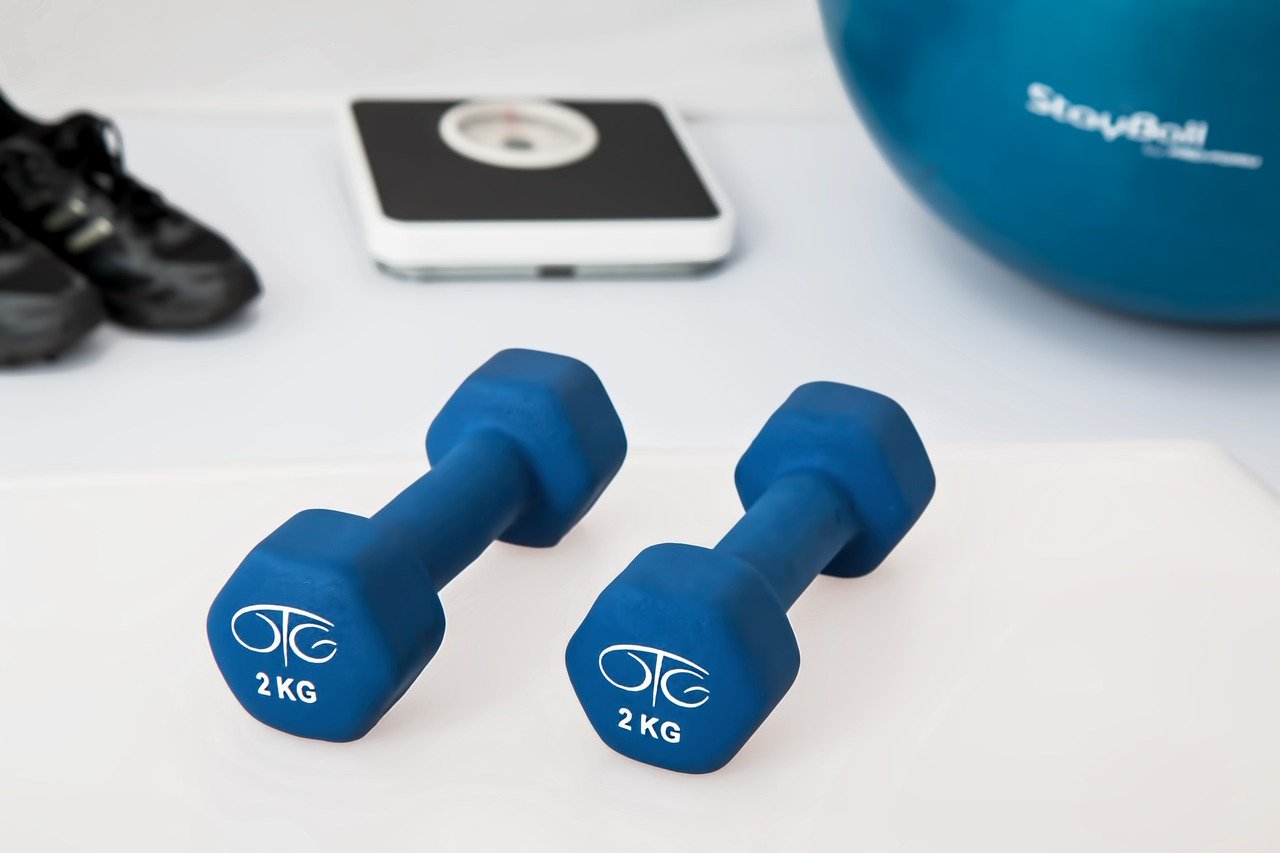If you’ve ever wondered whether you need to lift heavy weights to gain muscle, you’re not alone. Many fitness enthusiasts have debated this topic for years, but the answer may not be as straightforward as you think. While lifting heavy certainly has its benefits, such as increasing strength and building muscle mass, it’s not the only way to achieve your desired results. In fact, there are other factors to consider, such as proper form, volume of training, and progressive overload, that can all contribute to muscle growth. So, let’s explore the various factors at play and uncover the truth behind the age-old question: Do you really need to lift heavy to gain muscle?

The Importance of Resistance Training
Resistance training is a crucial component of any well-rounded fitness program, whether your goal is to build strength, increase muscle mass, or improve overall body composition. It involves performing exercises that use resistance, such as weights, resistance bands, or bodyweight, to challenge your muscles and stimulate muscle growth.
Overview of Resistance Training
Resistance training encompasses a wide range of exercises and training techniques that target different muscle groups. These exercises can be divided into two main categories: compound exercises and isolation exercises. Compound exercises, such as squats, deadlifts, and bench presses, involve multiple muscle groups and joints, making them highly effective for overall muscle development. On the other hand, isolation exercises, like bicep curls and tricep extensions, isolate specific muscle groups, allowing for more targeted muscle work.
Benefits of Resistance Training for Muscle Gain
Resistance training is known to offer numerous benefits when it comes to muscle gain. Firstly, it stimulates muscle protein synthesis, which is the process by which the body builds new muscle fibers. This is crucial for muscle growth and adaptation. Additionally, resistance training helps increase muscle hypertrophy, which is the enlargement of muscle cells, leading to an increase in muscle size and strength.
Another advantage of resistance training is its positive impact on bone health. Engaging in weight-bearing exercises can help improve bone density, reducing the risk of osteoporosis and other bone-related conditions. Resistance training also improves overall body composition by increasing lean muscle mass and reducing body fat percentage. This not only enhances physical appearance but also contributes to improved metabolic health.
Different Approaches to Resistance Training
There are various approaches to resistance training that can be tailored to suit individual goals and preferences. Some popular methods include traditional strength training, powerlifting, bodybuilding, and circuit training. Each approach focuses on different aspects of resistance training, such as lifting heavy weights for maximal strength gains or incorporating higher repetitions and shorter rest periods for muscular endurance.
Understanding Muscle Hypertrophy
Before diving deeper into resistance training, it’s important to understand the concept of muscle hypertrophy. Muscle hypertrophy refers to the increase in the size of muscle fibers, which occurs as a response to resistance training. This process involves the activation of satellite cells, which aid in the repair and growth of muscle tissue.
Definition and Process of Muscle Hypertrophy
Muscle hypertrophy occurs when the resistance placed on the muscles exceeds the current capacity, leading to microscopic damage to the muscle fibers. In response to this damage, the body initiates a repair process, which involves the activation of satellite cells. These cells fuse with existing muscle fibers, leading to an increase in the size and number of myofibrils within the muscle fibers. As a result, the muscle increases in size and strength over time.
Factors Affecting Muscle Growth
Several factors play a role in muscle growth and hypertrophy. One key factor is the intensity of the training stimulus. Higher resistance and heavier weights tend to elicit a greater hypertrophic response compared to lower resistance and lighter weights. Other factors that influence muscle growth include the frequency of training, volume (or total repetitions and sets performed), and proper nutrition to support muscle repair and growth.
Different Types of Muscle Fibers
Muscles are composed of different types of muscle fibers, each with its unique characteristics and functions. The two main types are type I (slow-twitch) and type II (fast-twitch) fibers. Type I fibers are more fatigue-resistant and prefer lower intensity, longer duration exercise. In contrast, type II fibers are involved in high-intensity, explosive movements and have a greater capacity for hypertrophy. Understanding the distribution and characteristics of these fibers in your body can help tailor your resistance training for optimal results.
Lifting Heavy vs. Light Weights
One ongoing debate in resistance training revolves around the use of heavy weights versus light weights. While both approaches can be effective, they have distinct advantages and considerations that should be taken into account based on your goals and training experience.
Lifting Heavy Weights
Lifting heavy weights is often associated with maximal strength gains and is typically performed with weights that allow for low repetitions and high resistance. This approach primarily targets the fast-twitch muscle fibers, which have the greatest potential for hypertrophy. By lifting heavy weights, you can continually challenge your muscles and gradually increase their strength and size over time.
Benefits of Lifting Heavy Weights
One of the key benefits of lifting heavy weights is the significant increase in muscle strength. When you consistently push your muscles to lift heavier loads, they adapt by recruiting more motor units and increasing their capacity to generate force. This not only enhances overall strength but also provides a solid foundation for other forms of resistance training.
Additionally, lifting heavy weights can result in substantial gains in muscle mass. The high mechanical tension created by heavy loading stimulates the activation of satellite cells, leading to increased protein synthesis and subsequent muscle hypertrophy. This makes it an effective approach for individuals seeking to maximize muscle growth.
Potential Risks and Considerations
While lifting heavy weights can yield impressive results, it’s essential to approach it with caution and proper technique. Inadequate form or improper progression in weight can increase the risk of injury. It’s crucial to prioritize safety by gradually increasing weights, practicing proper lifting mechanics, and seeking guidance from a qualified fitness professional, especially if you’re new to resistance training or lifting heavy loads.
Moreover, lifting heavy weights may not be suitable for everyone, especially those with certain medical conditions or joint limitations. Always consult with a healthcare professional before starting any new exercise program, and consider your individual circumstances and capabilities when determining the appropriate resistance training approach.
Lifting Light Weights
While lifting heavy weights is valuable for muscle growth and strength, don’t underestimate the power of lifting light weights. Incorporating lighter loads into your resistance training routine can offer unique benefits and serve as an effective complement to heavy lifting.
Lifting Light Weights for Muscle Growth
Lifting light weights typically involves performing exercises with a higher number of repetitions and lower resistance. This approach primarily targets the slow-twitch muscle fibers and places a greater emphasis on muscular endurance. While it may not result in significant muscle hypertrophy compared to heavy lifting, it can still contribute to muscle growth by stimulating protein synthesis and promoting blood flow to the working muscles.
Benefits of Lifting Light Weights
One of the major advantages of lifting light weights is the reduced stress on joints and connective tissues. This makes it a suitable option for individuals with joint issues or those recovering from injuries. Lifting light weights also allows for a greater focus on proper form, control, and mind-muscle connection, as the lower resistance enables a more controlled and deliberate movement.
Furthermore, incorporating lighter weights can help break through plateaus and provide variety to your training routine. It challenges your muscles in different ways, enhances muscular endurance, and helps develop better muscle fiber recruitment patterns. This can be particularly beneficial for individuals engaged in sports or activities that require sustained muscular effort over longer durations.
When and How to Incorporate Light Weights
To make the most of lifting light weights, it’s important to strategically incorporate them into your resistance training routine. For example, you can alternate heavy and light training days or integrate light weight exercises as active recovery days between more intense sessions. You can also use light weights for higher repetitions as finishing exercises at the end of your workouts to further fatigue the muscles and promote metabolic stress.
It’s worth noting that “light” is relative and can vary from person to person based on individual strength levels and training experience. Focus on using a weight that challenges your muscles without compromising proper form and control. Experimenting with different weight ranges and rep schemes can help you find the right balance between heavy and light weight lifting for your specific goals.

Progressive Overload and Muscle Adaptations
One fundamental principle of resistance training is progressive overload. It refers to gradually increasing the demands placed on the muscles over time to stimulate continuous adaptation and growth. Understanding how progressive overload works and implementing effective strategies is crucial for maximizing muscle gain.
Key Principle of Progressive Overload
Progressive overload entails progressively increasing the intensity, volume, or complexity of your workouts to force the muscles to adapt and grow. This can be achieved by adding weight to your exercises, increasing the number of sets and repetitions, shortening rest periods, or incorporating more challenging variations of exercises. The key is to push your body slightly beyond its comfort zone and continually provide a new stimulus for growth.
How Progressive Overload Stimulates Muscle Growth
Progressive overload creates a state of stress in the muscles, prompting them to respond and adapt. When your muscles are exposed to increasingly challenging resistance, they experience microscopic damage and inflammation. In response, the body initiates repair processes, such as muscle protein synthesis and cellular remodeling, resulting in muscular adaptations, including increased muscle size and strength.
Methods to Achieve Progressive Overload
Several methods can be employed to effectively achieve progressive overload in your resistance training. Firstly, you can gradually increase the resistance or weight used in your exercises. This can be done by adding small increments of weight over time, such as an additional 2-5 pounds, to keep challenging your muscles.
Secondly, you can manipulate the volume and intensity of your workouts. Increasing the number of sets and repetitions performed, or decreasing rest periods, can provide an added stimulus for muscle growth. Additionally, incorporating more complex and challenging exercises or variations can help ramp up the intensity and promote further muscle adaptations.
Lastly, monitoring and tracking your progress is essential for implementing progressive overload. Keeping a training log or using fitness apps can help you consistently assess and adjust your training parameters, ensuring that you’re continually pushing your body and avoiding training plateaus.
The Role of Intensity in Muscle Growth
Intensity is a critical factor to consider when designing a resistance training program aimed at muscle growth. It refers to the effort and energy expended during an exercise. Understanding how intensity affects muscle fiber recruitment and the subsequent physiological responses can help you optimize your training for maximal muscle gains.
Understanding Intensity in Resistance Training
In resistance training, intensity is often used to describe the percentage of your one-repetition maximum (1RM) that you’re lifting. It can also be assessed subjectively based on how close you are to muscular failure or your perceived exertion during an exercise. The higher the intensity, the closer you are to your maximum strength capacity.
Effect of Intensity on Muscle Fiber Recruitment
Muscle fiber recruitment is a crucial aspect of resistance training and has a direct impact on muscle growth. When you lift weights at high intensities, your body recruits and activates a greater number of motor units and muscle fibers to handle the load. This recruitment of additional motor units leads to a more significant stimulus for muscle growth.
Higher intensity exercises primarily target the larger, fast-twitch muscle fibers, which have the greatest potential for hypertrophy. By regularly engaging these fibers through high-intensity training, you can promote their growth and development, resulting in increased muscle size and strength.
Impact of Intensity on Strength and Hypertrophy
While high-intensity training is effective for muscle gain, it’s important to note that it also plays a crucial role in developing maximal strength. Heavy lifting not only stimulates muscle hypertrophy but also improves neural adaptations. The recruitment of more motor units and the synchronization of muscle contractions become more efficient when training at higher intensities, leading to greater overall strength gains.
However, it’s important to strike a balance between intensity and volume. Going too heavy too often without proper recovery can increase the risk of overtraining, burnout, and potential injuries. It’s crucial to design a training program that incorporates both high-intensity and moderate-intensity workouts to optimize muscle growth while minimizing the risk of overexertion.

Maximizing Muscle Growth through Various Rep Ranges
When it comes to resistance training, the number of repetitions per set, referred to as rep range, plays a significant role in muscle growth and adaptation. Different rep ranges elicit distinct physiological responses, leading to varying degrees of muscular hypertrophy and strength gains.
Different Rep Ranges and Their Effects
The rep ranges commonly used in resistance training can be broadly classified into three categories: low reps (1-5 repetitions), moderate reps (6-12 repetitions), and high reps (12+ repetitions). Each rep range elicits specific adaptations and serves different purposes in a well-rounded training program.
Benefits of Low Rep Ranges
Training with low reps and heavy weights primarily targets the fast-twitch muscle fibers responsible for maximal strength and power. This rep range is commonly used in powerlifting and strength-focused programs. Lifting at high intensities with low repetitions can lead to significant neural adaptations, such as increased motor unit recruitment and enhanced neural efficiency. While the hypertrophic response may not be as pronounced as with higher rep ranges, it provides a solid foundation for overall strength gains.
Benefits of Moderate Rep Ranges
The moderate rep range, typically ranging from 6-12 repetitions, is widely considered the sweet spot for muscle hypertrophy. It strikes a balance between intensity and volume, providing sufficient mechanical tension and metabolic stress to stimulate muscle growth. This rep range targets both the fast-twitch and slow-twitch muscle fibers, making it versatile for individuals aiming to increase muscle size and strength.
By lifting moderate weights for moderate repetitions, you can promote muscle fiber recruitment, blood flow, and metabolic adaptations. This leads to increased protein synthesis, muscle damage, and subsequent repair and growth. The moderate rep range is commonly used in bodybuilding and general fitness programs.
Benefits of High Rep Ranges
High rep ranges, typically exceeding 12 repetitions, are often associated with muscular endurance training. This rep range primarily targets the slow-twitch muscle fibers, which have a greater capacity for endurance but a lower potential for hypertrophy. While the hypertrophic response may not be as pronounced as with lower rep ranges, high repetitions can still promote muscular adaptations, enhance metabolic stress, and improve muscular endurance.
Incorporating high rep ranges into your training can help break through plateaus, challenge your muscles in different ways, and provide variety to your workouts. It’s particularly beneficial for individuals involved in activities that require sustained muscular effort over longer durations, such as endurance sports or high-volume training programs.
Considering Individual Differences
While the principles of resistance training and muscle gain remain consistent, it’s crucial to consider individual differences when designing a training program. Factors such as genetics, age, sex, training background, and individual goals can significantly influence the response to resistance training.
Individual Variation in Response to Training
Individuals vary in their response to resistance training, with some experiencing rapid gains in strength and muscle size, while others progress at a slower pace. This can be attributed to factors such as genetic predisposition and variations in muscle fiber distribution. Some individuals may naturally have a greater capacity for hypertrophy, while others may need to employ different strategies to achieve similar results.
Additionally, age and sex can impact the response to resistance training. Older individuals and females tend to have a lower baseline muscle mass and may experience slower rates of muscle gain. However, regular resistance training can still yield substantial improvements in muscle strength and size across all age groups and genders.
Factors Influencing the Response to Resistance Training
Aside from genetics and age, several other factors can influence the response to resistance training. One major factor is nutrition. Consuming an adequate amount of protein and overall calories is essential for supporting muscle repair and growth. Additionally, factors such as sleep quality, stress levels, and overall health can impact the body’s ability to recover and adapt to training stimuli.
Another crucial consideration is training experience and background. Beginners may experience rapid initial gains due to the novelty and stimulus of resistance training, while experienced individuals may need to employ more advanced techniques and strategies to continue progressing.
Tailoring a Training Program to Individual Needs
Given the individual differences in response to resistance training, it’s important to tailor a training program that aligns with your specific goals, preferences, and abilities. Consulting with a qualified fitness professional can help you assess your individual needs, develop a personalized plan, and make appropriate adjustments along the way.
Consider your training experience, available time for training, any existing injuries or limitations, and your desired outcomes. By taking these factors into account, you can create a program that optimizes your chances of success and keeps you motivated and engaged in the long run.
Other Considerations for Muscle Gain
While resistance training forms the foundation for muscle gain, a few additional factors should be considered to maximize your progress and overall results.
Proper Nutrition and Muscle Building
Proper nutrition is vital for muscle building and should work in synergy with your training program. Consuming an adequate amount of high-quality protein is essential for muscle repair and growth. Aim for a protein intake of around 0.8-1.2 grams per pound of body weight, distributed evenly throughout the day.
In addition to protein, carbohydrates provide the energy needed to fuel intense workouts and support muscle glycogen stores. Healthy fats, vitamins, and minerals also play a role in supporting overall health and ensuring optimal muscle function and recovery.
Adequate Rest and Recovery
While resistance training provides the necessary stimulus for muscle growth, it’s during rest and recovery periods that actual muscle repair and adaptations occur. Ensuring that you allow sufficient time for rest and recovery is crucial for optimizing results.
Plan rest days in your training program to allow your muscles and nervous system to recover from the demands of resistance training. Adequate sleep is also essential, as it plays a significant role in muscle recovery, hormone regulation, and overall health. Aim for 7-9 hours of quality sleep per night to promote optimal muscle growth.
Consistency and Progressive Overload
Consistency is key in resistance training. Aim to stick to a regular training schedule, allowing for progressive overload over time. Consistently challenging your muscles by gradually increasing the intensity and demands placed on them is crucial for continuous adaptation and muscle growth.
Tracking your workouts, monitoring progress, and making appropriate adjustments to your training program can help ensure consistency and prevent plateauing. By focusing on progressive overload and staying consistent, you’ll be on the path to achieving your muscle gain goals.
Conclusion
In summary, resistance training is essential for muscle gain and overall fitness. Whether you choose to lift heavy weights or incorporate lighter loads, the key is to challenge your muscles consistently, gradually increase the demands placed on them, and provide them with proper nutrition and rest. Remember that individual differences, goals, and preferences should guide your training approach. By finding the right balance between heavy and light weight training, tailoring your program to fit your needs, and staying consistent, you’ll be well on your way to achieving your muscle growth goals.

